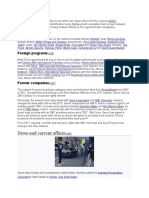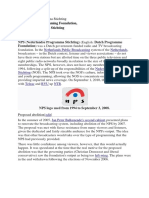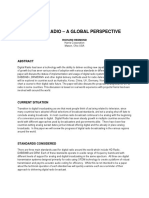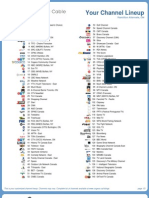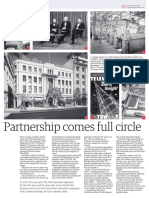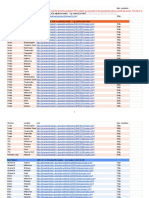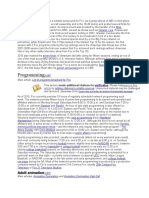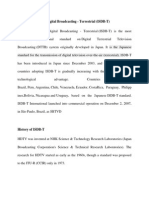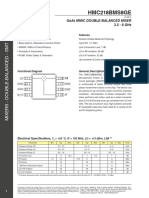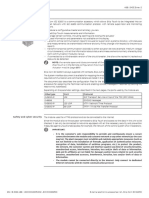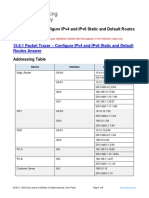tober 2009 and a HD simulcast of Seven until 25 September 2010.
The channel is available to high
definition digital television viewers in metropolitan areas through a number of owned-and-operated
stations. On 25 September 2010, 7HD was replaced by the new channel 7mate.
7HD returned as a high definition simulcast on channel 70 on 10 May 2016. Initially, the Melbourne
and Adelaide markets received 7HD as a HD simulcast of Seven's primary channel while the
Sydney, Brisbane and Perth markets received 7HD as a HD simulcast of 7mate; this was to
allow Australian Football League (AFL) matches to be broadcast in HD in those markets.[2][3] Sydney,
Brisbane and Perth temporarily received 7HD as a simulcast of the primary channel for the duration
of the 2016 Summer Olympics, before the change was made permanent during and after the 2017
Australian Open tennis.[4] Breakaway programming will be used to show further AFL matches in
HD.[5]
Contents
1History
o 1.1Origins
o 1.2Breakaway era
o 1.32016 revival
2Programming
3Availability
o 3.1Original channel
o 3.2Revival channel
4Logo history
5References
6External links
History[edit]
Origins[edit]
In 2004, after the 2001 introduction of digital terrestrial television in Australia, the Seven
Network began a part-time high definition simulcast on digital channel 70 under the name 7 HD
Digital. This simulcast showcased native high definition content alongside standard definition
services on Seven. During the times that native high definition content was unavailable for
simulcasting, a promo loop that showcased extracts from a variety of Seven's programs was
broadcast.[6]
Breakaway era[edit]
7HD was officially announced on 15 September 2007, with Seven West Media announcing their
intention to start a high definitionmultichannel, that was initially expected to launch in December
2007.[7] However, 7HD became the first free-to-air commercial television channel introduced to
metropolitan areas since 1988, when it launched prior on 15 October 2007, with 25th Hour being the
first program broadcast at 10:30 pm.[1]
The channel replaced Seven's existing high definition service 7 HD Digital, a part-time simulcast of
its standard definition and analogue services. Due to an amendment of the Broadcasting Services
Act 1992 in 2006 – the Broadcasting Legislation Amendment (Digital television) Act 2006 – television
networks were permitted to launch digital multichannels, provided that they are broadcast exclusively
in high definition.[8] The channel expanded its broadcast schedule on 10 December 2007 to include
�daytime programming which had previously been a full simulcast of the main channel. 7HD
breakaway programming ceased transmission on Sunday 4 October 2009 in preparation for the
launch of 7TWO a few weeks later on 1 November. 7HD then returned to being a full high definition
simulcast of Seven, before finally being replaced by 7mate on 25 September 2010.
2016 revival[edit]
On 10 May 2016, 7HD returned as a high definition simulcast on channel 70. However, Melbourne
and Adelaide were the only cities that received 7HD as a simulcast of Seven's primary channel on
that date; Sydney, Brisbane and Perth received 7HD as a simulcast of 7mate. This is so that
upcoming AFL matches can be shown in HD in all markets.[2][3]
In order to allow the 2016 Summer Olympics to be broadcast in high definition in all capital cities,
7HD was temporarily changed to a simulcast of Seven's primary channel in Sydney, Brisbane and
Perth on 5 August 2016. However, it was reverted to a 7mate simulcast in those markets on 22
August 2016, following the conclusion of the Olympics.[9]
On 16 December 2016, 7HD switched from simulcasting 7mate to simulcasting Seven's primary
channel in Sydney, Brisbane and Perth to allow the 2017 Australian Open tennis to be simulcast in
high definition in all metropolitan markets.[4] This change was not reverted and 7HD remained a
simulcast of Seven in all capital cities. However, in order to broadcast AFL matches featured on
7mate in HD, Seven will use breakaway programming to show AFL matches in HD while keeping
7HD as a simulcast of Seven.[5]
Programming[edit]
Further information: List of programs broadcast by Seven Network
During its time of breakaway broadcasting, 7HD broadcast a range of programming, with exclusive
transmissions on weekday and weekend afternoons as well as late on weeknights, and for some
time there was breakaway programming in prime-time on Saturdays and Sundays. Up to seven
hours of exclusive programming was broadcast daily.
Weekday afternoon programming included repeats of locally produced lifestyle programming, such
as The Great Outdoors, New Idea TV, as well as movies and Disney cartoons such as Kim
Possible, American Dragon: Jake Long, and My Friends Tigger and Pooh. In the late evenings a
mixture of exclusive series, movies and encore screenings of series were broadcast. Late-night
series broadcast included This is Your Laugh, Lost, Scrubs, That '70s Show, The Grid, Urban
Legends, Final 24, Dateline NBC, 5ive Days to Midnight, A Country Practice, and classic episodes
of Deal or No Deal as well as late movies and encores of other series shown on Channel Seven.
The only two series exclusively made for 7HD were The NightCap and This is Your Laugh. The
NightCap was broadcast exclusively on 7HD on Tuesdays and Thursdays at 10.30pm until its axing
during the Easter non-ratings break of 2008.
Availability[edit]
Original channel[edit]
In its former inception, 7HD was available Seven's owned-and-operated
stations, ATN Sydney, HSV Melbourne, BTQ Brisbane, SAS Adelaide, TVW Perth and STQ Queensl
and. Regional affiliate Prime Television also carried their own HD simulcast, Prime HD, on
its owned-and-operated stations, AMV Victoria, NEN Northern New South
Wales and CBNSouthern New South Wales/Australian Capital Territory. Southern Cross Television's
�Seven-affiliated stations carried their own HD simulcast, Southern Cross HD,
on TNT Tasmaniaand TND Darwin.
Southern Cross' other stations GTS/BKN Spencer Gulf/Broken Hill and QQQ Eastern & Central
Australia, as well as Golden West Network (owned by Prime) did not carry a HD simulcast.
